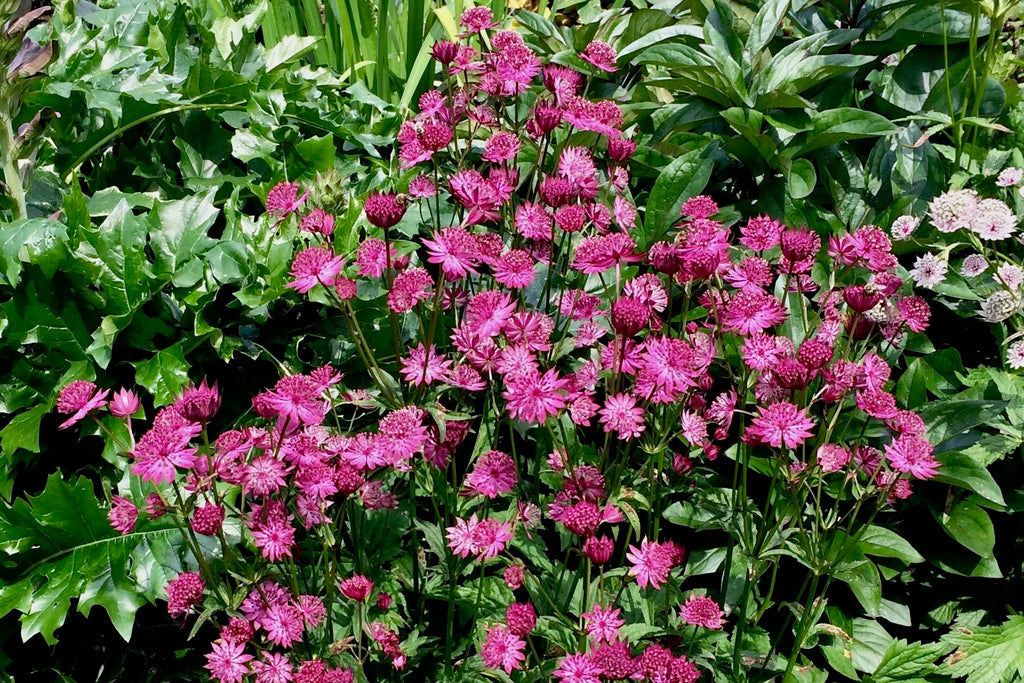


About this cultivar:
Astrantia major 'Venice' was Lia Leendertz' plant of the week in the 26th August 2011 edition The Guardian. Here is what she said "
What is it? A brooding, Victoria-plum-coloured version of a pretty cottage garden favourite. Hattie's pincushion is the oh-so-sweet and innocent common name for astrantia, most often found in pastel pink and white. In summer, pincushions of tiny flowers are surrounded by petal-like bracts on plants 75cm tall with a 45cm spread.
Plant it with? The deep ruby colouring will add a hint of something darker to any pastel scheme, giving an edge to twee cottage garden stylings. Also consider it against the acid yellows of euphorbia or alchemilla, which make the colour sing "
- Position: Full sun, partial shade
- Soil: Almost any soil
- Flowers: June, July, August, September
- Other features: Bees and Butterflies, Cut Flowers or Dried Flowers,
- Hardiness: H7 - Hardy in the severest European continental climates (< -20°C)
- Habit: Clump forming, Bushy
- Foliage: Deciduous
- Height: 45 - 75 cm (1.5 - 2.5 ft)
- Spread: 45 - 75 cm (1.5 - 2.5 ft)
- Time to full growth: 2 to 5 years
- Plant type: Herbaceous Perennial
- Colour: Pink, green
- Goes well with: Campanula lactiflora 'Pritchard's Variety', Salvia nemorosa 'Caradonna', Rosa, Geranium 'Sirak' (see photo)
About this genus:
Astrantia is an upright herbaceous perennial that is probably our favorite plant in the garden at Ballyrobert. We find that nearly every Astrantia cultivar grows well in nearly every soil and situation; from shade to sun, from dry to wet, from clay to sand! They look great in sun when buzzing with insects but they can also be used in some troublesome part-shade areas. When the flowers die back they dry out very quickly, go light brown, and stay upright - this gives wonderful structure if you decide not to cut them back. This makes a wonderful cut or dried flower, hence the prevalence in the industry.
Sometimes this Genus is known as Masterwort or Hatties pincushion. The Genus name comes from a Greek word 'astron' meaning star in reference to the flower head shape or from magistrantia (derived from the Latin word 'magister' meaning master or teacher).

